As you can see there is a heavy focus on financial modeling, finance, Excel, business valuation, budgeting/forecasting, PowerPoint presentations, accounting and business strategy. It might signal weak financial stability if a company has had more expenses than revenues for the last three years because it’s been losing money for those years. Assets are what a company owns or something that’s owed to the company. They include tangible items such as buildings, machinery, and equipment as well as intangibles such as accounts receivable, interest owed, patents, or intellectual property. Liability may also refer to the legal liability of a business or individual.

The Financial Modeling Certification
- Accurate financial reporting and decision-making need proper recognition and management of these obligations.
- They are compared to assets, which represent the assets of the company.
- A company can manage its liabilities by maintaining a balance between current and non-current liabilities, ensuring timely payments, and planning for future obligations.
- Mortgage loans, like most loans, are broken down into monthly payments over the period agreed.
- In addition, liabilities impact the company’s liquidity and, in the case of debt, capital structure.
- Adam received his master’s in economics from The New School for Social Research and his Ph.D. from the University of Wisconsin-Madison in sociology.
Liabilities must be reported according to the accepted accounting principles. The most common accounting standards are the International Financial Reporting Standards (IFRS). However, many countries also follow their own reporting standards, such as the GAAP in the U.S. or the Russian Accounting Principles (RAP) in Russia. Although the recognition and reporting of the liabilities comply with different accounting standards, the main principles are close to the CARES Act IFRS. Amount owed to proprietor as capital is known as owner’s equity. Form 11-C – Use Form 11-C, Occupational Tax and Registration Return for Wagering, to register for any wagering activity and to pay the federal occupational tax on wagering.

Accounting Crash Courses

Current Liability is one which the entity expects to pay off within one year from the reporting date. Contingent Liabilities are obligations that may or may not occur. These obligations may arise due to specific situations and conditions. Get up and running with free payroll setup, and enjoy free expert support. Try our payroll software in a free, no-obligation 30-day trial. When you owe money to lenders or vendors and don’t pay them right away, they will likely charge you interest.

What is a Liability, Examples, Types, its Placement, etc?
- Long-term obligations have long repayment durations and set borrowing fees.
- A company might take out debt to expand and grow its business or an individual may take out a mortgage to purchase a home.
- Basically, these are any debts or obligations you have that need to get paid within a year.
- Choose CFI for unparalleled industry expertise and hands-on learning that prepares you for real-world success.
- A company’s assets are economically valuable resources used to get more future benefits.
- If one of the conditions is not satisfied, a company does not report a contingent liability on the balance sheet.
- In the accounting context, contingent liabilities are only recorded in the books if they are at least 50% likely to occur in the future.
It’s important to keep a close eye on your current liabilities to help make sure that you have enough liquidity from your current assets. This is to help guarantee that any debts or obligations your business has can get met. For determining owners equity or shareholders equity, the total liabilities are subtracted from total assets. Also, the businesses which earn benefits in the short term from the current assets, use those assets for paying off the current liabilities.
- The unearned money is gradually recognised as revenue while the customer stays at the hotel.
- Whether you’re a seasoned business owner or just starting out, this comprehensive guide will equip you with the knowledge you need to handle business liabilities confidently.
- Interest payable can include interest from bills as well as accrued interest from loans or leases.
- A contingent liability is an obligation that might have to be paid in the future but there are still unresolved matters that make it only a possibility, not a certainty.
- The lease is categorised as an operating lease, and ABC Corporation records the present value of the lease payments on its balance sheet as a lease obligation liability.
- You would use this funding to purchase business assets and fund other areas of your operations.
- Unlike assets, which provide future economic benefits, liabilities signify future sacrifices of economic benefits.
A liability is generally an obligation between one party and another that’s not yet completed or paid. Managing business liabilities is not just about staying compliant; it’s about protecting the financial and legal health of your business. By understanding what liabilities are, how they work, and their potential impact, you can make informed decisions that safeguard your business’s future. Current liabilities are short-term obligations with a bookkeeping and payroll services one-year repayment timeline, while long-term liabilities have a repayment timeline exceeding one year. Reporting liabilities accurately is critical for financial transparency and compliance with accounting rules.
A lawsuit stands a 50% chance of being successful, thus what are liabilities in accounting posing as a potential obligation to such an organisation. A liability, in financial and economic terms, refers to a company’s obligations to anyone other than the entity itself, which it is liable to write off sometime in the future. Your business balance sheet gives you a snapshot of your company’s finances and shows your assets, liabilities, and equity. Unlike most other liabilities, unearned revenue or deferred revenue doesn’t involve direct borrowing.

Comentarios recientes